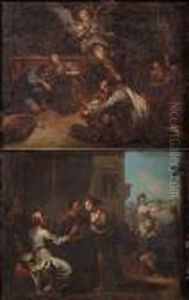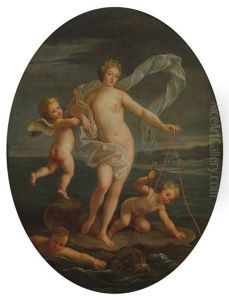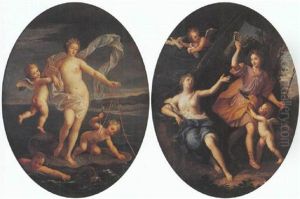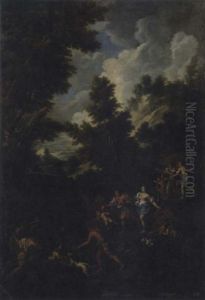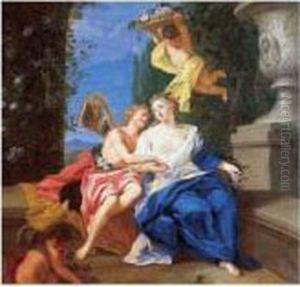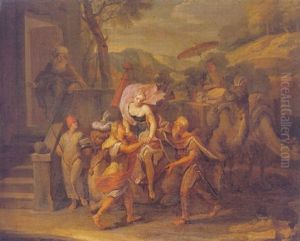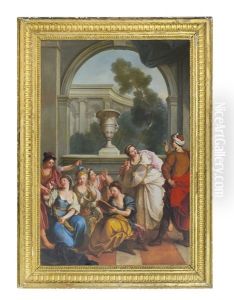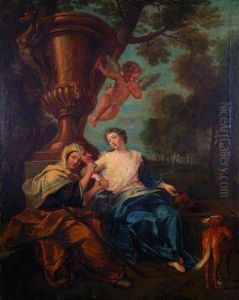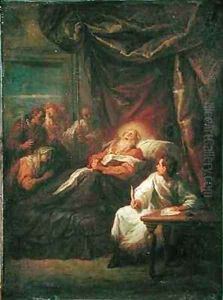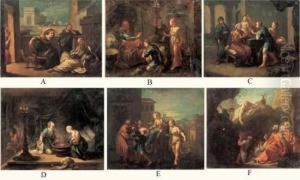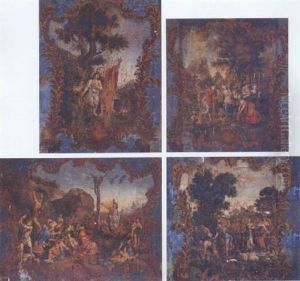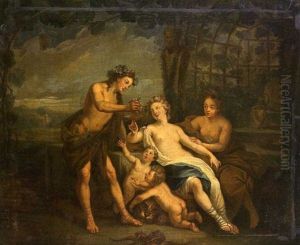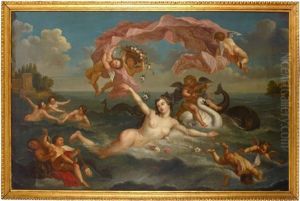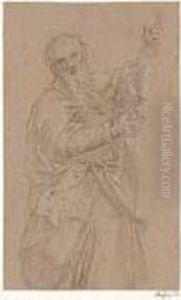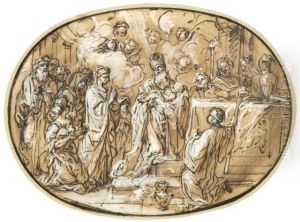Bon De Boulogne Paintings
Bon Boullogne, sometimes also known as Bon de Boulogne to distinguish him from other family members with similar names, was a French painter and draftsman prominent during the late 17th century. Born in Paris on February 22, 1649, he was part of a family of artists; his father, Louis Boullogne the Elder, and his mother, Marie Le Maire, were both painters. He had three siblings, Geneviève, Louis the Younger, and Madeleine, all of whom also became noteworthy artists in their own right.
Bon initially received his training from his father and later continued his artistic education under the tutelage of the painter Laurent de La Hyre. He subsequently won the prestigious Prix de Rome in 1676, which allowed him to study at the French Academy in Rome, an institution established by Louis XIV to support French artists in Italy. His time in Rome had a significant influence on his style, as he was able to study the works of classical antiquity and the Renaissance masters first-hand.
After returning to France, Boullogne was received into the Académie Royale de Peinture et de Sculpture in 1681. He obtained the title of professor there in 1688 and taught a number of students who would go on to have successful careers. Bon Boullogne's work reflects the classical French Baroque style, characterized by its grandeur, clarity, and adherence to classical principles. His religious compositions, as well as allegorical and mythological scenes, were particularly admired. He painted for various French institutions and worked on commissions that included decorations for the Palace of Versailles and other royal residences.
Boullogne's career flourished under the patronage of the French court, and his work was favored by Louis XIV. He was involved in the decoration of the Hôtel des Invalides and the Gobelins Manufactory, where he contributed to the design of tapestries. Bon Boullogne’s contribution to the French art scene was significant, as he helped to perpetuate an ideal of classical painting that was central to French artistic identity at the time.
Bon Boullogne died on May 17, 1717, in Paris. His legacy continued through his students and family, especially his brother Louis, who also became a well-respected artist of the time. Boullogne's works can still be seen in various museums and galleries, including the Louvre in Paris, and they continue to be studied for their embodiment of French Baroque aesthetics.








